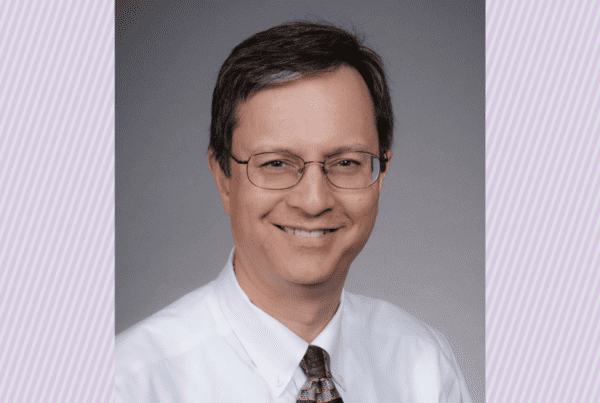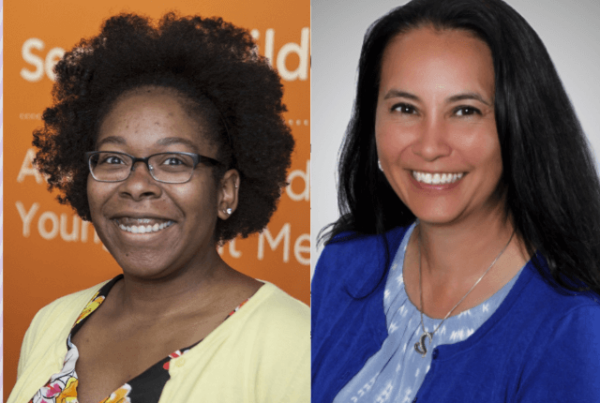On May 16, Michael Myint, MD, will become UW Medicine’s new Chief Population Health Officer. He will also clinically practice at the Infectious Disease & Travel Medicine Clinic at Harborview and continue to teach at the UW School of Medicine as a clinical associate professor of Medicine. Myint will work to further integrate our value-based care and population health activities across all UW Medicine areas, from primary care to specialty care to hospital care.
Myint has worked in many population health-focused roles, serving as the physician executive for Population Health, Quality and Risk Adjustment for MultiCare since 2019 and as the medical director of Population Health at Swedish Health Services from 2009-2013. He has also been a leader in the COVID-19 pandemic, serving as MultiCare’s system physician executive for Epidemiology and COVID-19 Response.
Get to know him:
Why did you go into medicine?
I went into medicine because it’s a great connection between my love of science and my love of people.
My mom was a nurse, and when I was growing up in the ’70s and ‘80s, she worked in a county-based public health clinic where I got to help with vaccinations. Assisting my mom at the clinic is where the scientific and love for helping people merged for me. It’s truly the connection between the ever-evolving science, human health and microbiology, and how you translate those concepts into helping people.
How did working in infectious disease lead you to focus on population health?
Infectious disease is very much about population health and public health. It’s a specialty where clinical care, population health and public health come together in a way that is broadly applicable to other specialties and aspects of healthcare.
The two major pandemics in my career have been HIV/AIDS and COVID-19. For the HIV/AIDS epidemic, it wasn’t just the novel infectious disease we had to contend with, the disease had an evolution and we had increasingly effective therapies; the problem was that it existed in the context that many of these patients had social stigmas including their sexual orientation or substance use disorders, and they were often marginalized for these reasons. We had to address all those aspects to take care of the patient and create a space where they could feel safe, heard and respected. That approach is really at the foundation of individual patient care. Translating this to population-based care though, is more than just the sum of caring for individuals, but using different tools to address health inequities and access to care.
Still, in U.S. healthcare, it’s always challenging because we get paid mainly to do things for people in the fee-for-service model rather than manage care for populations of people. I realized very early on that fee-for-service does not address the needs of many in the population, especially for our poorest and most vulnerable patients. It’s not only our abilities as clinicians to care for the individual patient but our ability to help transform the system, to think about different payment models that allow us to address health equity and social determinants of health. That’s when my passion moved to not only individual patient care in infectious diseases (I’m still very passionate about that) but to how we can change the system to take better care of populations in a way that delivers high-value care to every individual and that doesn’t leave anyone behind.
When I think about change, I think about the way I was trained: if a patient didn’t show up, they were considered a noncompliant patient. I learned that often it was because they had a job, kids in school, didn’t have a car or and they couldn’t afford gas. Before, I would say they are a noncompliant patient, but in a population health model I ask “why?” It’s not just about the medical care, it’s holistic care of patients. That’s where I feel like my initial clinical care really exposed the incentives that are in fee-for-service healthcare and drove my passion to start to change that model and move toward population-based health.
What will your role as Chief Population Health Officer encompass?
This new role is centered around how we develop systems on health and wellness within our healthcare system, how we align those systems with evolving payment models and how we create sustainability in high-value care as defined by the populations we take care of. It’s how we get the right care to the right patient at the right place at the right time with the right experience and for the right cost.
As Chief Population Health Officer, my role is to ensure our high-value care model is lined up with a sustainable financial model. We want patients and communities to look at UW Medicine as their medical home and partner in health and wellness for their whole life — from birth to death. I want to investigate how we can build a program to support patients, not only those patients who come to us, but also to take on communities and populations of patients that we will take accountability for by doing outreach and creating more access to care.
How do you plan to approach your role as Chief Population Health Officer?
UW Medicine has done so much work over the years to enhance quality and value of care and take on population health issues. I am building on the shoulders of a lot of fantastic work that has already happened.
I think all healthcare organizations wrestle with the complexity of healthcare and the economic, financial and sociological challenges to delivering high-quality, high-value healthcare at scale. UW Medicine is complex. I want to learn and understand how each entity within UW Medicine thinks about and contributes to population health. One of the opportunities we have in this role is to better coordinate across UW Medicine. So, my first goal is to understand and then next is to crosswalk and find synergies between the multiple stakeholders across UW Medicine.
From there, we will develop a roadmap and make sure that we are as successful as we can be over the near and long term. We are investing in the long-term transformation of payment models not only locally but in the U.S. We want UW Medicine to lead in delivering high-value care to the communities that we serve. I know we have the passion and expertise to be at the forefront of this. Our vision is to lead in this patient-centered, high-value space.
What’s the impact of a population health lens on how we provide care?
I see population health as a health equity lens. Often, the reason why people have trouble managing chronic diseases or have difficulty getting their wellness screens is that they are running into social determinants or geographic challenges to accessing healthcare. A population-based way of looking at the world forces us to also address health equity issues and barriers that some patients have in achieving their care.
What has the COVID-19 pandemic taught you about the importance of population health?
The COVID-19 pandemic really pointed out the significant opportunities to invest in public health, population health and health equity. COVID-19 made clear where U.S. healthcare is failing. We’ve underinvested in public health, and we’ve underinvested in outreach to patients and communities, partially because of how we are paid for healthcare. COVID-19 disproportionately hit elderly populations, minority populations and geographic areas that have less access to healthcare, and we saw the negative consequences of what was built up over the last 50 years. We have so much high-end care, but as a society, we are not doing the basics like being able to have trusting conversations with communities to get vulnerable people vaccinated and keep them healthy.
UW Medicine has done a fantastic job with outreach to vulnerable populations with mobile testing and mobile vaccine clinics. It’s what really attracted me to take on this role. I see UW Medicine as an organization that is passionate about addressing the systemic issues in healthcare, and I saw this during COVID-19.
COVID-19 also showed us that with effort and energy, we can do more than we ever historically thought we could in a relatively short amount of time. UW Medicine distributed hundreds of thousands of vaccines within months. COVID-19 motivates me to consider how to use that same drive and focused energy to leap forward in health equity. COVID-19 showed us the disparities, but it also showed the opportunities we have as healthcare delivery systems to take care of our community.
What are you most excited about being at UW Medicine full time?
Through the UW, we have the UW School of Medicine, School for Public Health and the Foster School of Business, where I received my MBA. We also have departments such as Global Health and Health Metrics Sciences. We have a lot of smart people throughout UW and UW Medicine to address what is one of the biggest challenges in the U.S.: creating a model for high-value care.
The average life span of Americans has gone down in the last two years, and part of that is because we are not investing in the right areas. Population health is about trying to understand how we invest in the right things and how an organization like UW Medicine can partner with other external entities and community-based health and wellness organizations to do better.
What’s something you want people to know about population health?
Population health means different things to different people, and there isn’t one definition that everyone agrees with around the country and probably around UW Medicine. Part of my initial listening phase in this role is to understand and then ultimately create a shared common language for UW Medicine around population health and value-based care. Each of these terms isn’t exactly the same, and they mean different things to different audiences. Part of my role is to make sure that we in UW Medicine have a shared common language, as that will be necessary to align our resources to be the leader in high-value care for our communities.
What do you like to do on your time off?
I’ve traveled extensively and have been to all 50 states. I’m an avid biker and I’m training for my first Ragnar run from Bellingham to Seattle.

Myint family hike.
I love camping, hiking and backpacking with my daughters. And my wife and I love cooking and collect whiskeys from around the world.
Editor’s note: Responses were lightly edited for length, clarity and style.


